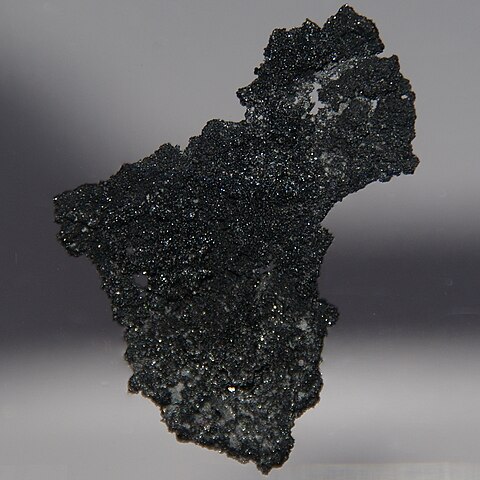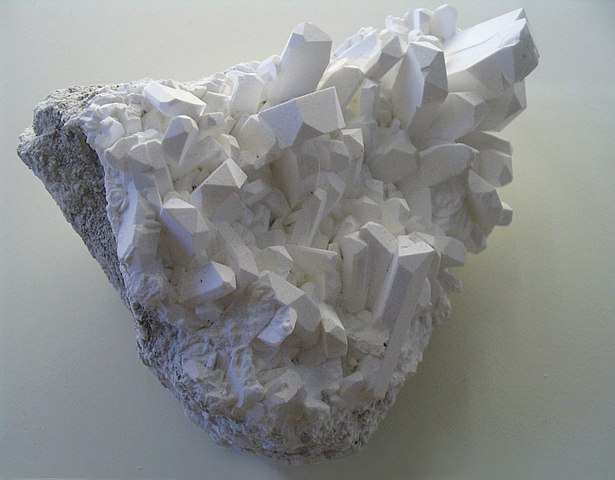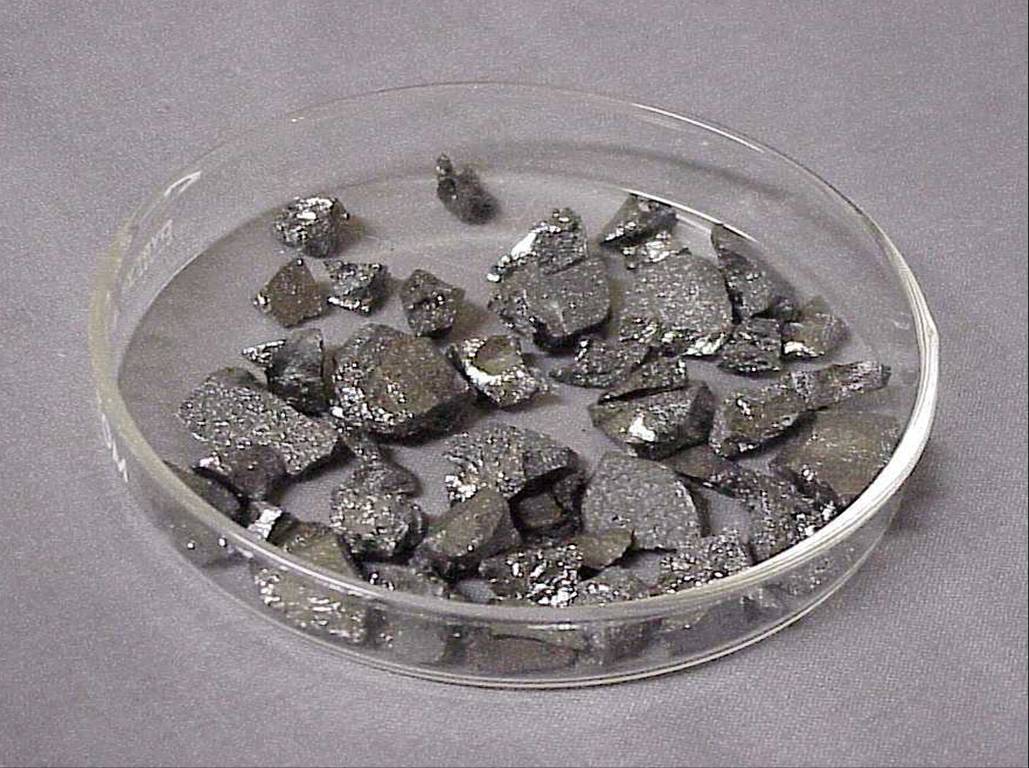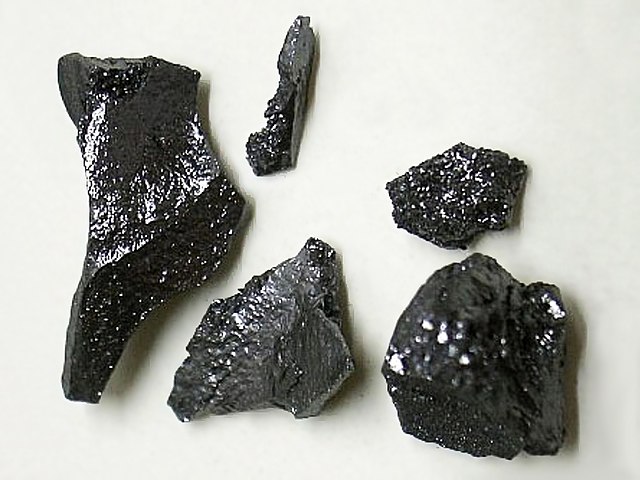Boron is a chemical element with the atomic number 5 and symbol B. First discovered in the early 19th century, it is a non-metal found in nature in different forms and compounds.
Boron is an essential element for plants, animals, and all living organisms on Earth. In addition, Boron has multiple industrial and medical applications.
Boron has several properties that give it many unique uses. It has a relatively low melting point, making it useful in metallurgy and construction. It also has low reactivity, making it a good electrical insulator.
Boron is also insoluble in water, making it valuable for a variety of chemical processes.

SONY DSC
Introduction to Boron
By weight, it is the 20th most abundant element in the universe. On Earth, it is found only in trace amounts in minerals, coal, and volcanic dust. Boron can be produced in the laboratory either by thermal decomposition of boron-containing compounds or through the electrolysis of boron halides.
Boron has several forms, including amorphous, crystalline, and metamorphic. Most crystalline forms of Boron have a metallic luster and are black or grayish in color. Amorphous Boron is a black, non-metallic powder with a high melting point. It is also insoluble in both water and oil.
Boron is found in many different minerals, such as borates, boron carbide, boron nitride, and boron hydride. It is also found in trace amounts in some types of seawater and fossil fuels.
Boron also has many medical uses. It is necessary for the proper formation and growth of bones, teeth, and other body tissues. It also plays an important role in cognitive function and is essential for healthy nerve cells.
In addition to its medical applications, Boron has a wide variety of industrial uses. It is used in metallurgy and ceramics, as well as in the production of plastics and carpentry.
Boron is also an environmental pollutant, with the potential for serious health risks to humans and other living organisms. It is released into the atmosphere through the burning of fossil fuels and can have toxic effects on humans and animals. It is important to be aware of the potential environmental impacts of Boron and to monitor and regulate its use.
In summary, Boron is an essential element for all life forms on Earth. It has unique properties that make it useful for a variety of applications, from medical to industrial.
It is important to be aware of the potential environmental impacts of Boron and to monitor and regulate its use.
Physical and Chemical Properties of Boron
Boron is an element found in nature that has a variety of physical and chemical properties. Boron is an atomic element with the symbol B and an atomic number of five.
It is located in Group 13 of the periodic table and is classified as a metalloid. Boron has a variety of unique properties that make it useful in a variety of industrial and medical applications.
Boron has a melting point of 2076 degrees Celsius and a boiling point of 3927 degrees Celsius. Its density is 2.37 grams per cubic centimeter and its electronegativity is 2.04 on Pauling’s scale. Boron is an extremely hard element and has high thermal and electrical conductivity. It is also resistant to corrosion and oxidation.
Boron is found in a variety of compounds and forms, including borates, boron carbide, boron nitride, and boron hydride. Borates are a group of compounds containing boron and oxygen. They are typically solid at room temperature and are used in a variety of industrial and medical applications.
Boron carbide and boron nitride are both extremely hard materials and are used in the production of abrasives and refractory materials. Boron hydride is a colorless gas with a pungent odor. It is used in the production of rocket fuels and explosives.

Boron is found in a variety of natural and synthetic sources. Natural sources include coal, oil, and seawater. Boron is also found in soil in the form of borate minerals. Synthetic sources of boron include boron-containing compounds such as boric acid and borates. Boron is also found in meteorites and other extraterrestrial rocks.
Boron is an important element in the human body and is essential for normal bone health and cognitive function. Boron deficiency has been linked to a number of health risks, including bone loss and cognitive decline. Boron supplements are available to help people get the recommended daily intake of boron.
Boron has a variety of industrial uses. It is used in metallurgy, ceramics, carpentry, plastics, and other manufacturing processes. Boron compounds are also used as catalysts in the production of polymers, fuel cells, and semiconductors.
Although boron is an important element in many industrial and medical applications, it can be toxic when released into the environment. It can be found in the atmosphere as a pollutant from industrial processes and can be toxic to humans.
It can also cause toxic effects in plants and animals, and is highly soluble in water, making it difficult to remove from water sources.
In conclusion, boron is an important element with a variety of physical and chemical properties. It has a variety of industrial and medical uses, and its compounds can be found in natural and synthetic sources. Boron is essential for normal bone health and cognitive function but can be toxic when released into the environment.
Understanding boron’s physical and chemical properties is important for making safe and effective use of this essential element.
Common Compounds of Boron
Boron is an element composed of several compounds, some of which are more commonly used than others. A few of the most common boron compounds include Borates, Boron Carbide, Boron Nitride, and Boron Hydride. Let’s take a look at each of these common boron compounds.
Borates are a family of inorganic compounds that contain boron and oxygen. They are used in a wide variety of applications, including fertilizers, detergents, and flame retardants. Borates are also used in the production of ceramics and glass, as an ingredient in enamels, and as a preservative in insecticides.
Boron Carbide is a refractory ceramic material composed of boron and carbon. It is one of the hardest materials known, making it ideal for industrial applications such as abrasives, sandblasting, and polishing. It is also used in armor plating and in the production of nuclear reactors.
Boron Nitride is an inorganic compound composed of boron and nitrogen. It is used in cosmetics, as a lubricant, as a fire retardant, and as a non-stick coating in cookware. It is also used in the production of nanotubes, which are made of pure boron nitride.
Boron Hydride is a compound composed of boron and hydrogen. It is used as a fuel source, as a reducing agent, and in the production of lithium batteries. It is also used in the production of semiconductors, as a catalyst in organic chemistry, and as a lubricant for machined parts.
These are just a few of the common boron compounds used in modern industry. Each of these compounds has unique and useful properties that make them indispensable in various technological and industrial applications. It is clear that understanding the compounds of boron is essential to understanding its importance to modern society.
Sources of Boron
Boron is an abundant element on Earth and a wide variety of sources can be found in both natural and synthetic forms. Natural ores are found in rocks and minerals while synthetic ores are derived from chemical processes. In addition, boron is also present in the sun and other celestial bodies.
Natural Ores: Boron can be extracted from a variety of natural ores, including the borate minerals borax, colemanite, and ulexite. These minerals are often found in deposits formed from the evaporation of lake beds and hot springs and are then mined as a source of boron.
Synthetic Ores: Borates can also be manufactured by combining boric acid with an alkaline compound. This process is often used to create a more concentrated form of boron ore for use in industry.
Solar System Ores: Boron can also be found in many interplanetary bodies, such as asteroids and comets. In addition, boron is present in the sun and other stars and is believed to have been created during the formation of the solar system.
Boron is an essential element and is widely used in a variety of industries. Its availability from natural and synthetic sources makes it an ideal choice for a range of applications. In addition, boron’s presence in celestial bodies provides a unique opportunity to study its role in the formation of the universe. As a result, boron is one of the most important elements in the periodic table.

Health Benefits of Boron
Boron has numerous health benefits that have been studied for decades. This mineral plays an important role in bone health, cognitive function, and metabolism. Here we are going to discuss all the health benefits of boron in detail.
Bone Health
Boron is essential for bone structure and strength. It helps in the absorption of calcium by the body, which is essential for the growth of healthy bones.
A deficiency of boron can lead to weak bones, osteoporosis, and an increased risk of fractures. Studies have found that when boron is added to a diet deficient in calcium, it helps in increasing bone density.
It also helps in preventing bone loss due to osteoporosis. Some studies have even found that boron supplementation can reduce the risk of hip fracture in elderly people.
Cognitive Function
Boron also plays an important role in cognitive function. It helps in the proper functioning of the brain and can improve concentration and focus.
Studies have found that boron can help improve memory and has a positive effect on cognitive performance. It has also been found to reduce aggression and anxiety.
Metabolism:
Boron is also crucial for the metabolism of other vitamins and minerals like calcium, magnesium, and vitamin D. It helps in the absorption of these essential vitamins and minerals into the body, which are crucial for many bodily functions.
Boron helps in regulating the levels of calcium and magnesium in the blood, which can help in preventing bone loss and improve overall health.
Deficiency:
Boron deficiency is rare but can lead to serious health problems if left untreated. Symptoms of boron deficiency include weak bones, impaired cognitive function, fatigue, and depression.
It is important to ensure that you get enough boron in your diet to prevent these health problems.
Supplementation:
Boron supplementation is recommended for those who are deficient in this mineral. Boron supplements are available in many forms, including capsules, tablets, and liquid extracts. These supplements can be taken daily to meet your daily boron needs. It is important to consult a doctor before taking any supplements as they can interact with other medications.
In conclusion, boron plays an important role in both keeping our bodies healthy and helping in many industrial processes. It is essential for bone health, cognitive function, and metabolism. It is important to ensure that you get enough boron from your diet or through supplementation. Boron deficiency can lead to serious health problems, so it is best to take the necessary precautions.
Industrial Uses of Boron
Boron is a versatile element that has a multitude of uses in industrial settings. Over the last century, boron has been used in a variety of industries, from metallurgy to carpentry. This element is essential for a large number of products, both in its elemental form and in its compounds. Here, we’ll explore the various industrial uses of boron.
Metallurgy: Boron is widely used in metallurgy, as it can be used to strengthen alloys and to improve their machinability. Boron-alloyed steels are often used in the aerospace and automotive industries, as they are both strong and light. Boron-alloyed steels are also used in the construction and agricultural industries.
Ceramics: Boron is used in the production of borosilicate glass, an extremely durable and heat-resistant material used for many applications, including cookware and laboratory equipment. In addition, boron is used to produce enamels and glazes, which are often used to decorate ceramics.
Carpentry: Boron is used in the production of plywood, as it adds strength and durability to the product. This type of plywood is resistant to water damage and is widely used in the construction of homes and furniture.
Plastics: Boron is often used in the production of polymers, as it can improve the strength and flexibility of the product. In addition, boron can be used to produce flame-retardant plastics, which are often used in the automotive and aerospace industries.
These are just a few examples of the industrial uses of boron. This versatile element is essential for a wide variety of products, and its uses are constantly expanding. From metallurgy to plastics, boron is an important part of the modern industrial world.

Environmental Impact of Boron
Boron is a naturally occurring element in the periodic table, found in many ores on Earth. It has a wide variety of uses and is found in many everyday products. While it is a necessary element, boron can also have a negative impact on the environment.
Boron pollution is a major environmental concern. It is often found in emissions from industrial processes, such as mining and smelting, as well as in waste from the burning of fossil fuels. Boron can also become an air pollutant through wind currents, or when it is released from factories.
Toxic effects of boron on humans can include eye and skin irritation, respiratory problems, and nausea. These effects can occur when air particles containing boron are breathed in. Long-term exposure can also cause damage to the liver and kidneys.
The presence of boron in the atmosphere can also lead to pollutants such as ozone, sulfur dioxide, and carbon dioxide. These pollutants can contribute to climate change and cause air pollution.
Boron pollution can also have a negative impact on water sources. When boron finds its way into rivers or lakes, it can become toxic to fish and other wildlife. It can also cause water contamination, making it unsafe for humans to drink.
In addition to the environmental hazards of boron pollution, it can also disrupt the balance of ecosystems. This can lead to a decrease in biodiversity and a decrease in productivity in certain areas.
Though boron can be a danger to the environment, it is also an essential element for many industrial processes and everyday products.
Proper management of boron is essential to ensure it is not damaging to the environment. By adhering to proper safety protocols and regulations, the environmental hazards associated with boron can be minimized.
Facts
Boron is a chemical element with the symbol B
Its atomic number 5.
The word boron was coined from borax
Borax in its mineral form first saw use as a glaze, beginning in China circa 300 AD
It constitutes about 0.001 percent by weight of Earth’s crust.
Boron was not recognized as an element until it was isolated by Sir Humphry Davy and by Joseph Louis Gay-Lussac and Louis Jacques Thénard.
Boron is a solid at room temperature.
Boron is a period 2 chemical element, which is the second row on the periodic table.
Boron is a group 13 chemical element.
Boron has two stable isotopes.
The two stable isotopes are 11B and 10B.
Boron melts at 2075 °C (3767 °F), and boils at 4000 °C (7232 °F).
Boron is the lightest element having an electron in a p-orbital in its ground state.
Boron is mined from borate minerals found in the Earth’s crust.
Boron is used in fireworks and pyrotechnics to give a green color to the flares.
50% of the boron used annually is for insulation and structural materials.
Boron has the highest melting and boiling point of all the metalloids on the periodic table.
Boron oxide is used in glassmaking and ceramics.
Boron is available both in Amorphous form and Crystalline form.
Boron carbide is used in tank armor and bullet proof vests.
There are at least 100 minerals where you will find Boron.
Boric acid is an insecticide used against cockroaches, ants and fleas.
Plants need boron to help maintain the integrity of their cell walls.
Turkey produces about half of the global yearly demand
Turkey and the United States are the largest producers of boron products
23% of global boron production comes from the single Rio Tinto Borax Mine
boron is used as a dopant for semiconductors like silicon, silicon carbide and germanium.
Information
| Boron | |||||||||||||||||||||
|---|---|---|---|---|---|---|---|---|---|---|---|---|---|---|---|---|---|---|---|---|---|
| Pronunciation | BOR-on | ||||||||||||||||||||
| Allotropes | α-, β-rhombohedral, β-tetragonal (and more) | ||||||||||||||||||||
| Appearance | black-brown | ||||||||||||||||||||
| Standard atomic weight Ar°(B) | |||||||||||||||||||||
|
|||||||||||||||||||||
| Atomic number (Z) | 5 | ||||||||||||||||||||
| Group | group 13 (boron group) | ||||||||||||||||||||
| Period | period 2 | ||||||||||||||||||||
| Block | p-block | ||||||||||||||||||||
| Electron configuration | [He] 2s2 2p1 | ||||||||||||||||||||
| Electrons per shell | 2, 3 | ||||||||||||||||||||
| Physical properties | |||||||||||||||||||||
| Phase at STP | solid | ||||||||||||||||||||
| Melting point | 2349 K (2076 °C, 3769 °F) | ||||||||||||||||||||
| Boiling point | 4200 K (3927 °C, 7101 °F) | ||||||||||||||||||||
| Density when liquid (at m.p.) | 2.08 g/cm3 | ||||||||||||||||||||
| Heat of fusion | 50.2 kJ/mol | ||||||||||||||||||||
| Heat of vaporization | 508 kJ/mol | ||||||||||||||||||||
| Molar heat capacity | 11.087 J/(mol·K) | ||||||||||||||||||||
Vapor pressure
|
|||||||||||||||||||||
| Atomic properties | |||||||||||||||||||||
| Oxidation states | −5, −1, 0,+1, +2, +3 (a mildly acidic oxide) | ||||||||||||||||||||
| Electronegativity | Pauling scale: 2.04 | ||||||||||||||||||||
| Ionization energies |
|
||||||||||||||||||||
| Atomic radius | empirical: 90 pm | ||||||||||||||||||||
| Covalent radius | 84±3 pm | ||||||||||||||||||||
| Van der Waals radius | 192 pm | ||||||||||||||||||||
| Other properties | |||||||||||||||||||||
| Natural occurrence | primordial | ||||||||||||||||||||
| Crystal structure | rhombohedral | ||||||||||||||||||||
| Speed of sound thin rod | 16,200 m/s (at 20 °C) | ||||||||||||||||||||
| Thermal expansion | β form: 5–7 µm/(m⋅K) (at 25 °C) | ||||||||||||||||||||
| Thermal conductivity | 27.4 W/(m⋅K) | ||||||||||||||||||||
| Electrical resistivity | ~106 Ω⋅m (at 20 °C) | ||||||||||||||||||||
| Magnetic ordering | diamagnetic | ||||||||||||||||||||
| Molar magnetic susceptibility | −6.7×10−6 cm3/mol | ||||||||||||||||||||
| Mohs hardness | ~9.5 | ||||||||||||||||||||
| CAS Number | 7440-42-8 | ||||||||||||||||||||
| History | |||||||||||||||||||||
| Discovery | Joseph Louis Gay-Lussac and Louis Jacques Thénard (30 June 1808) | ||||||||||||||||||||
| First isolation | Humphry Davy (9 July 1808) | ||||||||||||||||||||
|
|||||||||||||||||||||
